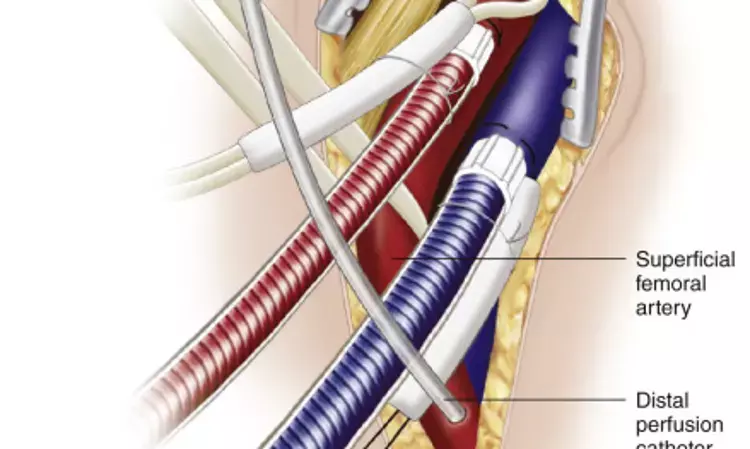- Home
- Medical news & Guidelines
- Anesthesiology
- Cardiology and CTVS
- Critical Care
- Dentistry
- Dermatology
- Diabetes and Endocrinology
- ENT
- Gastroenterology
- Medicine
- Nephrology
- Neurology
- Obstretics-Gynaecology
- Oncology
- Ophthalmology
- Orthopaedics
- Pediatrics-Neonatology
- Psychiatry
- Pulmonology
- Radiology
- Surgery
- Urology
- Laboratory Medicine
- Diet
- Nursing
- Paramedical
- Physiotherapy
- Health news
- Fact Check
- Bone Health Fact Check
- Brain Health Fact Check
- Cancer Related Fact Check
- Child Care Fact Check
- Dental and oral health fact check
- Diabetes and metabolic health fact check
- Diet and Nutrition Fact Check
- Eye and ENT Care Fact Check
- Fitness fact check
- Gut health fact check
- Heart health fact check
- Kidney health fact check
- Medical education fact check
- Men's health fact check
- Respiratory fact check
- Skin and hair care fact check
- Vaccine and Immunization fact check
- Women's health fact check
- AYUSH
- State News
- Andaman and Nicobar Islands
- Andhra Pradesh
- Arunachal Pradesh
- Assam
- Bihar
- Chandigarh
- Chattisgarh
- Dadra and Nagar Haveli
- Daman and Diu
- Delhi
- Goa
- Gujarat
- Haryana
- Himachal Pradesh
- Jammu & Kashmir
- Jharkhand
- Karnataka
- Kerala
- Ladakh
- Lakshadweep
- Madhya Pradesh
- Maharashtra
- Manipur
- Meghalaya
- Mizoram
- Nagaland
- Odisha
- Puducherry
- Punjab
- Rajasthan
- Sikkim
- Tamil Nadu
- Telangana
- Tripura
- Uttar Pradesh
- Uttrakhand
- West Bengal
- Medical Education
- Industry
Femoral Arterial Cannulation Provides Excellent Results for Aortic Dissection Repair

Acute dissection of the ascending aorta is a lethal disease that requires prompt diagnosis and surgical intervention. It is the most common and disastrous event to affect the aorta. However, in a study, researchers have reported that ideal femoral artery cannulation remains a safe and reliable option for aortic dissection repair. The research has been published in the JOURNAL OF THORACIC DISEASE in February 2021 issue.
Over the last two decades, there was a shift towards alternative access sites for arterial cannulation for the repair of type A aortic dissections. Initially, the axillary artery became the primary alternative cannulation site. However, the optimal cannulation site for the repair of type A aortic dissection remains controversial. The concern for Malperfusion syndrome has initiated a national trend away from femoral cannulation to the axillary artery and direct ascending aortic cannulation. Dr Anthony Lemaire and his team conducted a study to report a single-centre experience with femoral artery cannulation for the repair of a type A dissection.
It was a retrospective study on 52 patients who underwent surgical repair for a type A dissection between January 2012 and June 2019 at a single institution. Among 52 patients analyzed, 35 (67.3%) underwent femoral artery, 11 (21.2%) direct ascending aortic, and 6 (11%) axillary artery cannulation for arterial access. The researchers used deep hypothermic circulatory arrest in all patients, and reported the rates of postoperative mortality and complication.
Key findings of the study were:
- Upon analysis, the researchers observed that the rate of mortality and bleeding for all the patients undergoing repair of the type A dissection repairs were 27% (14/52) and 19% (10/52).
- In all patients with femoral arterial cannulation, cardiopulmonary bypass was established. The researchers observed no complications, specifically relating to the three cannulation approaches.
- They found that the bleeding rate for patients with femoral cannulation (13%) was higher compared with the rate for the other cannulation approaches (6%). However, they noted that neither of the bleeding was related to the cannulation site.
- They also noted that none of the mortalities identified were directly attributable to the cannulation approach in each case.
The authors concluded, "Despite the recent shift away from femoral cannulation, the results of the study show that femoral artery cannulation is safe and produces excellent results for establishing cardiopulmonary bypass. The concerns for malperfusion syndrome related to femoral cannulation were not seen."
For further information:
Medical Dialogues Bureau consists of a team of passionate medical/scientific writers, led by doctors and healthcare researchers. Our team efforts to bring you updated and timely news about the important happenings of the medical and healthcare sector. Our editorial team can be reached at editorial@medicaldialogues.in.
Dr Kamal Kant Kohli-MBBS, DTCD- a chest specialist with more than 30 years of practice and a flair for writing clinical articles, Dr Kamal Kant Kohli joined Medical Dialogues as a Chief Editor of Medical News. Besides writing articles, as an editor, he proofreads and verifies all the medical content published on Medical Dialogues including those coming from journals, studies,medical conferences,guidelines etc. Email: drkohli@medicaldialogues.in. Contact no. 011-43720751


